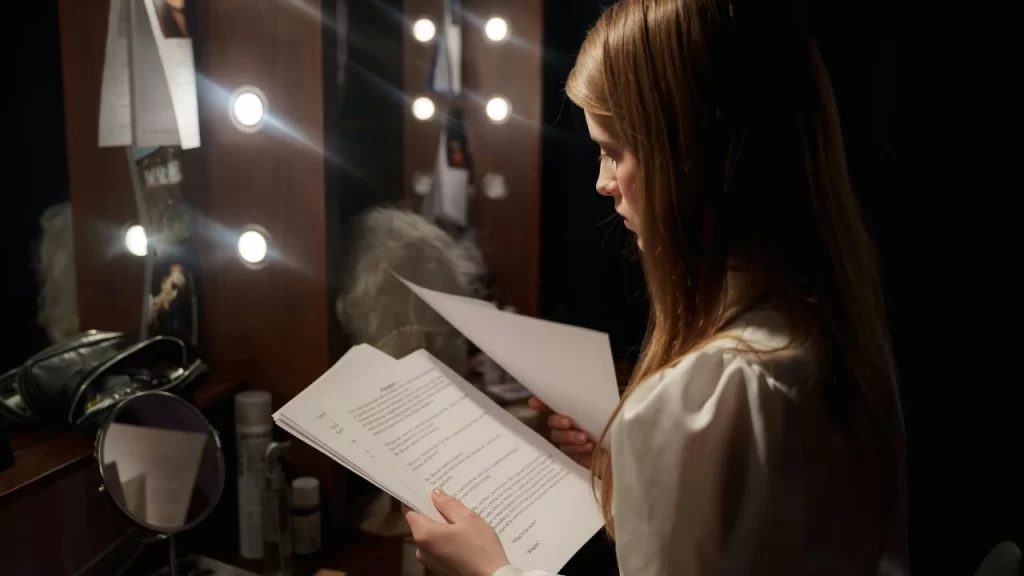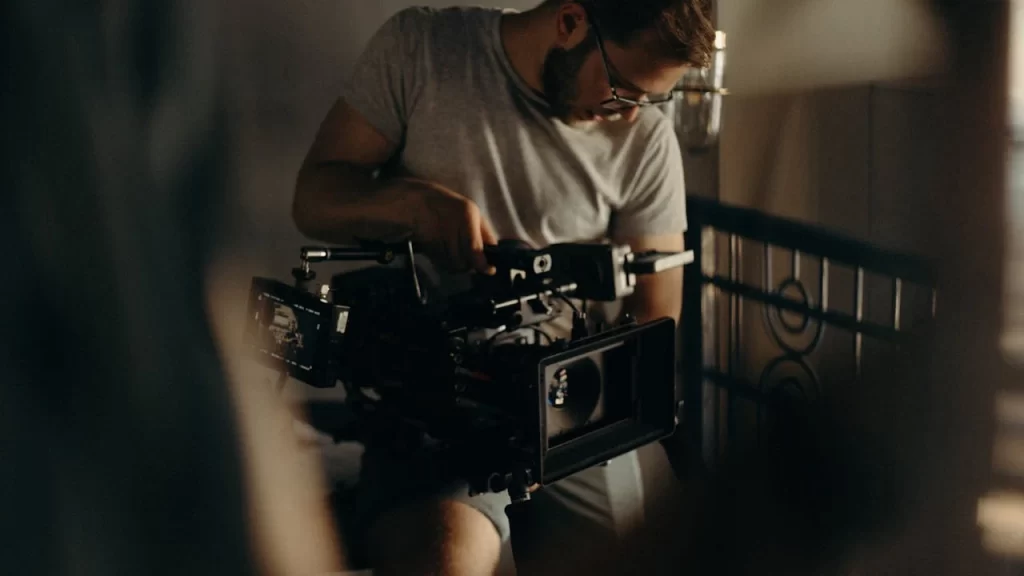Understanding the Purpose of a Documentary Outline
Creating a documentary outline is a fundamental step in the how to make a historical documentary process. This outline serves as a blueprint, guiding the entire project from conception to final production. Whether you are working with a documentary video production company or tackling the project independently, a well-structured outline ensures that your historical narrative is cohesive, engaging, and impactful. The purpose of this outline is to map out the story, identify key themes, and establish the visual and audio elements that will bring the historical context to life.
An outline not only helps in organizing your thoughts but also provides clarity to all team members involved in the production. It’s the document that everyone refers to, from the director to the editor, ensuring that every piece of the documentary aligns with the overall vision. Without a clear outline, even the most compelling story can become disjointed and confusing, losing its impact on the audience.
Key Elements of a Documentary Outline
Title and Logline
The title and logline are the first impressions of your documentary. The title should be compelling and reflective of the documentary’s core theme. The logline, a brief summary of the documentary, needs to capture the essence of the story in a way that intrigues the audience and invites them to learn more about how to make a historical documentary. It’s crucial to keep the logline concise, yet informative, encapsulating the documentary’s primary focus and the historical significance it aims to convey.
For example, if your documentary is about the untold stories of World War II veterans, your title could be “Silent Heroes,” and your logline might be, “An exploration of the personal sacrifices and heroic deeds of the unsung soldiers of World War II.” This immediately gives potential viewers an idea of what to expect and piques their interest.
Synopsis
The synopsis is a detailed overview of the documentary, providing a broad picture of the narrative arc. It outlines the main story, subplots, and the key events that will be covered. The synopsis should highlight the historical context, the importance of the events being depicted, and how these events will be presented to the audience. Including secondary keywords such as Animated Video Service and Corporate Video Production Company in India can help in making the content more accessible and relevant for broader searches, without detracting from the primary focus of how to make a historical documentary.
A well-crafted synopsis will not only describe the flow of the documentary but also convey the emotional journey that the audience will experience. For instance, in a documentary about the civil rights movement, the synopsis might detail how the narrative will move from the early struggles of activists to the eventual legal victories, interwoven with personal stories of those who lived through these pivotal moments.
Structure and Format
A well-organized structure is essential in how to make a historical documentary. The structure defines the flow of the documentary, determining how the story unfolds from beginning to end. This includes deciding on the chronological order of events, the pacing of the narrative, and the transition between different segments. The format, whether it’s a traditional narrative or a more experimental approach, should complement the story and enhance the viewer’s understanding of the historical events.
For example, a chronological structure might work well for a documentary that aims to provide a comprehensive overview of a particular historical period. Alternatively, a thematic structure could be more effective for a documentary that explores different aspects of a complex issue, such as the economic and social impacts of the Great Depression. The format should be chosen based on what will best serve the story, whether that’s a traditional linear approach, a series of interlinked vignettes, or a hybrid format.
Key Scenes and Segments
Identifying key scenes and segments is a critical component of how to make a historical documentary. These scenes are the building blocks of your narrative, providing the audience with crucial information and emotional engagement. Each segment should be meticulously planned, considering how it contributes to the overall narrative and what historical details it reveals. Utilizing services like 3d technical animation services in India can help visualize complex historical events, making them more accessible to the audience.
For instance, in a documentary about the industrial revolution, key scenes might include the invention of the steam engine, the rise of factory towns, and the impact of these changes on workers’ lives. These scenes would be interspersed with expert interviews, archival footage, and possibly animated reconstructions to help the audience visualize the era.
Characters and Interviews
Characters and interviews play a pivotal role in how to make a historical documentary. They provide a human element to the narrative, connecting the audience with the historical events on a personal level. Whether you’re interviewing historians, eyewitnesses, or descendants of historical figures, these interviews must be carefully planned and executed to ensure they add value to the documentary. Including diverse perspectives and voices can enhance the documentary’s depth and credibility.
For example, a documentary on the civil rights movement could include interviews with activists, politicians, and ordinary citizens who witnessed key events. These interviews would provide firsthand accounts of the struggle, making the historical events more relatable and emotionally impactful. Including a variety of voices also ensures that the documentary provides a balanced and comprehensive view of the subject matter.
Visual and Audio Elements
The visual and audio elements are crucial in how to make a historical documentary. These elements not only enhance the storytelling but also help in creating an immersive experience for the audience. From archival footage to reenactments, choosing the right visual elements can significantly impact the documentary’s effectiveness. Audio elements, including the soundtrack and voiceover, should complement the visual narrative, reinforcing the historical context and emotional tone of the documentary. Collaborating with a branded content video production company or a 2d animation company in India can provide the expertise needed to refine these elements.
For instance, using period-appropriate music or sound effects can transport the audience to the historical era being depicted. Similarly, carefully chosen visuals, such as archival photographs or films, can provide a powerful connection to the past. These elements should be integrated thoughtfully to support the narrative rather than overwhelm it.
Steps to Create a Documentary Outline

Research and Gather Information
Research is the foundation of how to make a historical documentary. Gathering accurate and comprehensive information is essential for constructing a credible narrative. This involves delving into historical records, consulting experts, and sourcing relevant footage and images. Thorough research ensures that your documentary is not only informative but also authentic and respectful of the historical subject matter.
Primary sources, such as letters, diaries, and official documents, can provide invaluable insights into the period you’re documenting. Secondary sources, including books, articles, and expert interviews, can help contextualize these primary sources and provide a broader understanding of the historical events. Additionally, visual sources, such as photographs and films, can add depth and texture to your narrative.
Define Your Objectives
Before diving into the outline, it’s important to clearly define your objectives. What story do you want to tell? What message do you want to convey? Understanding the core objectives of your documentary will guide every decision you make in the how to make a historical documentary process. This step ensures that your outline is focused and that every element of the documentary contributes to the overall purpose.
For instance, if your objective is to highlight the untold stories of marginalized groups during a particular historical period, this will shape every aspect of your documentary, from the selection of interviewees to the choice of visual elements. Clear objectives also help in maintaining a consistent tone and focus throughout the documentary.
Draft a Preliminary Outline
The preliminary outline is the first draft of your documentary’s structure. It should include the main narrative arc, key scenes, and a rough sequence of events. This draft is a starting point that will evolve as you refine your ideas and gather more information. The preliminary outline is crucial in visualizing how to make a historical documentary and identifying potential gaps or weaknesses in the story.
At this stage, it’s important to remain flexible and open to changes. As you continue to research and gather feedback, new ideas and insights may emerge that could strengthen your documentary. The preliminary outline is a working document that will be revised multiple times before it is finalized.
Revise and Refine
Revising and refining the outline is an iterative process in how to make a historical documentary. As you continue to research and gather feedback, your outline will become more detailed and precise. This stage involves tightening the narrative, ensuring that each scene flows logically into the next, and that the overall structure supports the documentary’s objectives.
This step may also involve adding or removing scenes, reordering segments, and refining the focus of the documentary. Feedback from colleagues, experts, and even potential audience members can be invaluable in this process, helping to ensure that the documentary will be both engaging and informative.
Finalize the Outline
Finalizing the outline is the last step in the how to make a historical documentary process. At this stage, the outline should be a comprehensive and polished blueprint of the documentary. It should include all the key elements, from the title and logline to the visual and audio components. The final outline will serve as a guide for the production team, ensuring that everyone is aligned on the documentary’s vision and direction.
A finalized outline is essential for keeping the production on track, on time, and within budget. It provides a clear roadmap that the entire team can follow, reducing the risk of misunderstandings or last-minute changes that could derail the project.

Tips for Writing an Effective Documentary Outline
Writing an effective documentary outline is a skill that requires practice and attention to detail. Here are some tips to keep in mind when working on how to make a historical documentary:
- Be clear and concise in your descriptions. Avoid overly complex language that could confuse the reader.
- Use active voice to make the narrative more engaging. For example, “The historian explains” is more dynamic than “It is explained by the historian.”
- Ensure that each element of the outline contributes to the overall story. Every scene, character, and visual should serve a purpose.
- Avoid unnecessary jargon or overly technical language. Remember that your audience may not be familiar with specialized terms.
- Incorporate visual and audio elements early in the outline to help visualize the final product. This will also make it easier to communicate your vision to the production team.
Conclusion
Mastering how to make a historical documentary involves careful planning, thorough research, and attention to detail. By following the steps outlined above and avoiding common mistakes, you can create a documentary that is both educational and engaging, leaving a lasting impact on your audience. Whether you’re working with a video production company in Bangalore or producing unique content for YouTube, the key to success lies in a well-crafted documentary outline.
The journey from concept to completion may be challenging, but with a solid outline as your guide, you can navigate the complexities of documentary filmmaking with confidence. A well-executed documentary not only educates and informs but also has the power to inspire, provoke thought, and even change the way people view history. By dedicating the time and effort to create a detailed and thoughtful outline, you lay the foundation for a successful and impactful historical documentary.


Leave a Reply